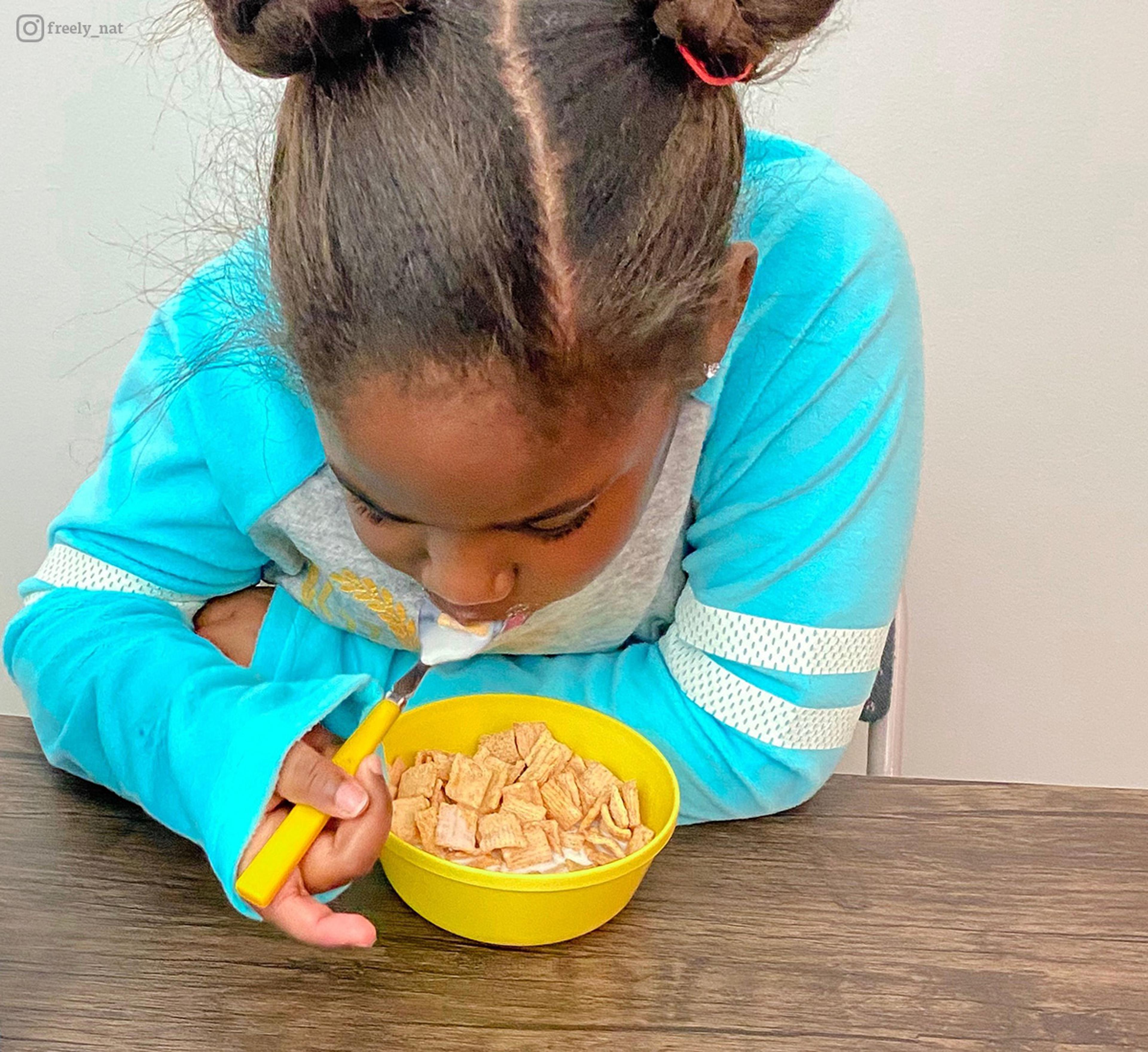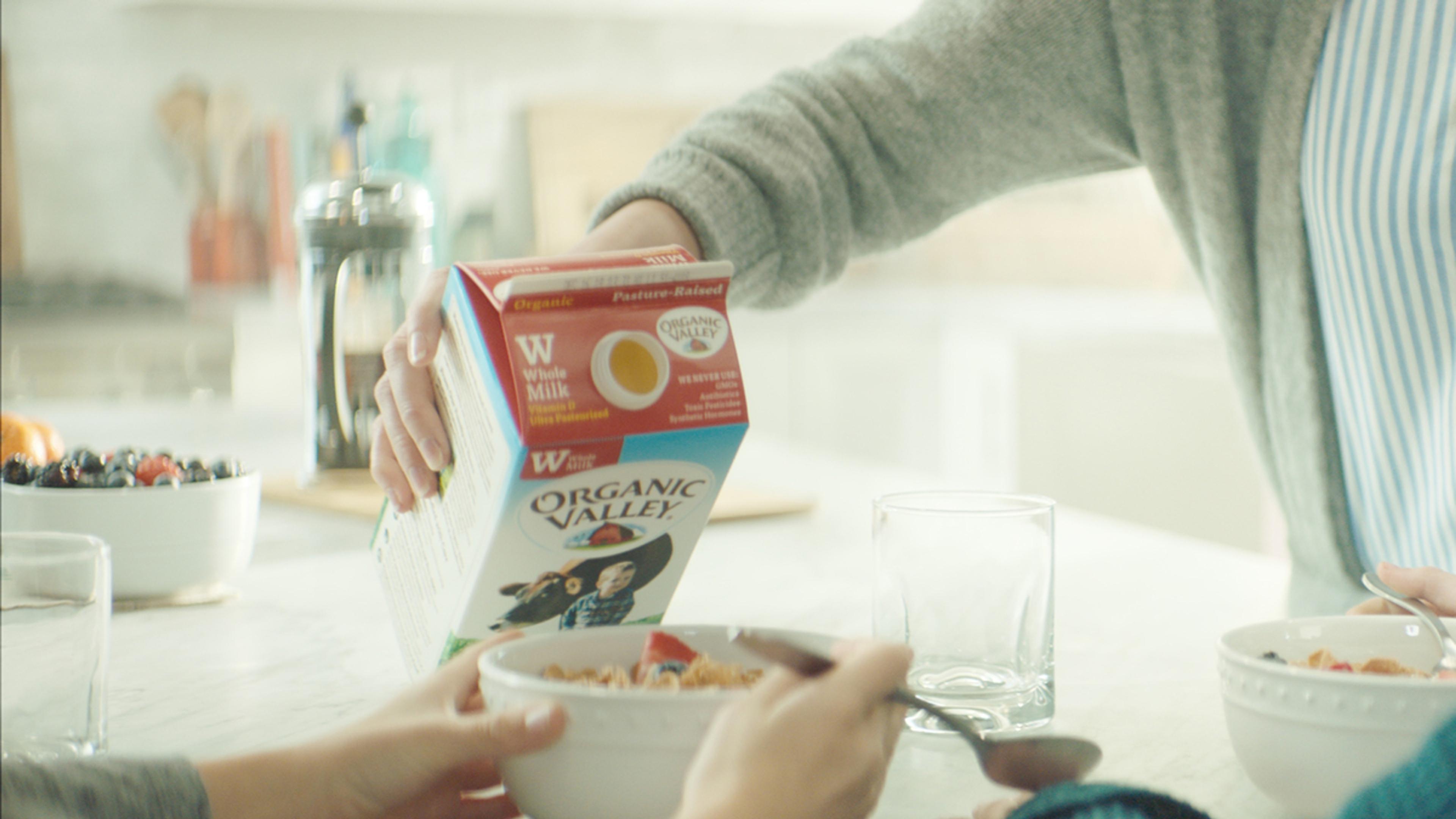
Food
Milk and Cereal for Breakfast: Villain or Victim?
I grew up in a house where milk and cereal was a regular option for breakfast. It was fast, cheap, and everyone loved it. That was, of course, until milk and cereal became the villain. We went from a low-fat-crazed society to a low-carb-crazed society overnight, and instead of looking for a milk and cereal combination we could feel good about, we just threw it out like the baby with the bathwater.
That’s not to say we should throw all caution to the wind and start stocking up on Frosted Flakes and Cheerios. But it is to say we now have better options that not only taste good, but also can be nourishing to us and our families. We all live fairly busy lives these days, and instead of trying to be a nutrition perfectionist (only to fail when Pizza Friday hits), we can try to find some happy mediums that are sustainable and still nutritious.
Are you ready to reconsider milk and cereal with me? Let’s take a peek at what to look for when we go shopping. Not all milks and/or cereals are created equal, so we have to be ingredient label detectives to find the best fit for our families.

What to Look For in Your Cereal
Without a doubt, a trip down the cereal aisle can be incredibly overwhelming. There are bright boxes everywhere with claims on heart health, fiber, gluten-free, whole grains, and everything in between. It can be very confusing to know whether to believe the boxes or simply throw up your hands and skip the aisle altogether.
Here’s a quick pro-tip when looking at cereals: Ignore the claims on the front of the box. Why? Because those marketing claims are often unfounded. They may not have been well-researched and are intended to make you want to purchase that cereal. Kind of misleading, huh? Totally. But since it’s allowed by the Food and Drug Administration, we must move forward and be better detectives.
So what should you focus on? The ingredient list and the nutrition facts panel, found on the side or back of the box. Here we can dig a little deeper into what is in our products and make informed decisions from there.
Ingredients
While there may be some unknowns on the label (like “tocopherols” which is nothing more than vitamin E), the ingredient list should be mostly recognizable and not include artificial ingredients or added sweeteners. We want to find whole grains, natural sugars (like cane sugar over corn syrup), and other whole and real ingredients. If you find multiple sources of sugar on the list—for example, cane sugar, corn syrup, maltodextrin, fructose, or dextrose—that’s a red flag and you may want to put it back. Also, the shorter the list, usually the better.
Fiber
Fiber is what fills us up and helps keep us regular. Not to mention, fiber has been shown to be protective for heart health. Cereal that is a good source of fiber (containing more than 4 grams per serving) can help us feel full longer. In general, we should consume 25 to 35 grams of fiber per day, so starting the day off with a good source can help us reach that desirable total.
Sugar
Sugar is delicious. It hooks us and keeps us wanting more. While some sugar is certainly OK (it’s necessary for many bodily and mental functions), we aren’t looking for a bowl of ice cream for breakfast here. When looking at your cereal, check out the nutrition facts panel and look for “Added Sugars.” Ideally, this should be less than 10 grams.
I recommend focusing on cereals rather than granolas because, believe it or not, granolas can contain more sugar than cereals. If you crave a little sweetness with your milk and cereal, try tossing in some fresh fruit, which will provide a little natural sugar plus meaningful nutrition. Keeping sugar in check can help to regulate blood sugar levels and keep you feeling evenly energized all day long.
Protein
Protein helps to fuel our lean body mass and, in my experience as a registered dietitian, is usually lacking in most people’s diets. Protein is important for so many processes in the body and, like fiber, helps us feel full and satiated for longer.
That said, protein is a nice to have, not a need to have when looking at cereals. Why? Because cereals are grain-based, they naturally won’t contain much protein unless they’re fortified. But that’s OK. That’s where milk can come in! Milk is a good source of protein (particularly if you choose fortified milk), so it can tag-team with cereal to make it a more complete meal.

What to Look For in Your Milk
Milk, luckily, is a little more straightforward. Here we are mainly looking at a few things: quality, sugar content, and protein.
Quality
Quality starts on the farm. A healthy animal means a healthy dairy product and, thus, can translate to our health. I recommend looking for organic milk at the very least, but if you can find it, organic grass-fed milk is the gold standard. Organic cows aren’t given added hormones or antibiotics, and they’re required to spend lots of time outdoors, grazing on pasture. Studies have shown that when cows have a lot of fresh grass in their diet, their milk contains higher levels of beneficial omega-3 and CLA fatty acids. Check the labels to find out more, or research the brand to see if it’s transparent about how it raises its cattle.
Sugar
Milk for your cereal should only have naturally occurring sugars (in the form of lactose for regular milk, or simple sugars if the milk is lactose-free). If the milk claims any added sugar, it may not be the best choice for your milk and cereal combo.
I personally recommend Organic Valley’s Pasture-raised Milk and 100% grass-fed Grassmilk®. I love the quality and know that the milk is coming from healthy and happy cows. Plus, both options contain no added sugar.
Protein
As mentioned with cereal, protein is an important component of any meal. Protein fills you up and keeps you satisfied. Milk can be a way to boost the protein in your breakfast if your cereal choice isn’t a strong source.
When I find my protein intake isn’t up to par, I love using Organic Valley Fortified Milk, which is milk with more milk in it. OV's Lowfat and Skim Fortified Milks include real organic powdered milk to increase the protein from 8 grams per cup to 11 and 10 grams per cup, respectively, along with increasing the calcium to 30% DV!
Lactose Intolerant?
It’s OK, it happens! Many people are naturally lactose-intolerant, and you may find you do better with lactose-free milk because it includes the lactase enzyme to make the milk lactose-free. Choosing organic lactose-free milk ensures you're getting all the nutrition of real milk, which can't be found in non-dairy alternatives.

My Top Milk & Cereal Picks
This list is not exhaustive but is meant to give you an idea of some amazing cereals that fit the above criteria and are delicious with your Organic Valley milk (or dairy alternatives for those who need them). These are not sponsored—they are my independent recommendations. Enjoy!
Forager Project Organic Grain-Free O’s
Milk and cereal doesn’t need to be a nutritional villain! Instead, let’s educate ourselves and our families on the power of choice when it comes to any type of food.
Go ahead, enjoy your milk and cereal!
Laura Ligos is a registered dietitian who resides in Albany, New York. She takes a food-first approach and focuses on optimizing the health of her clients and followers through her private practice and brand, “The Sassy Dietitian.” She has a Bachelor of Science in Nutrition Sciences from Cornell University and went on to complete her Dietetic Internship and MBA at Dominican University. You can connect with her on Instagram @thesassydietitian or on her website at www.thesassydietitian.com.
Related Articles
- Tags:
- organic nutrition,
- food labeling,
- organic breakfast
















